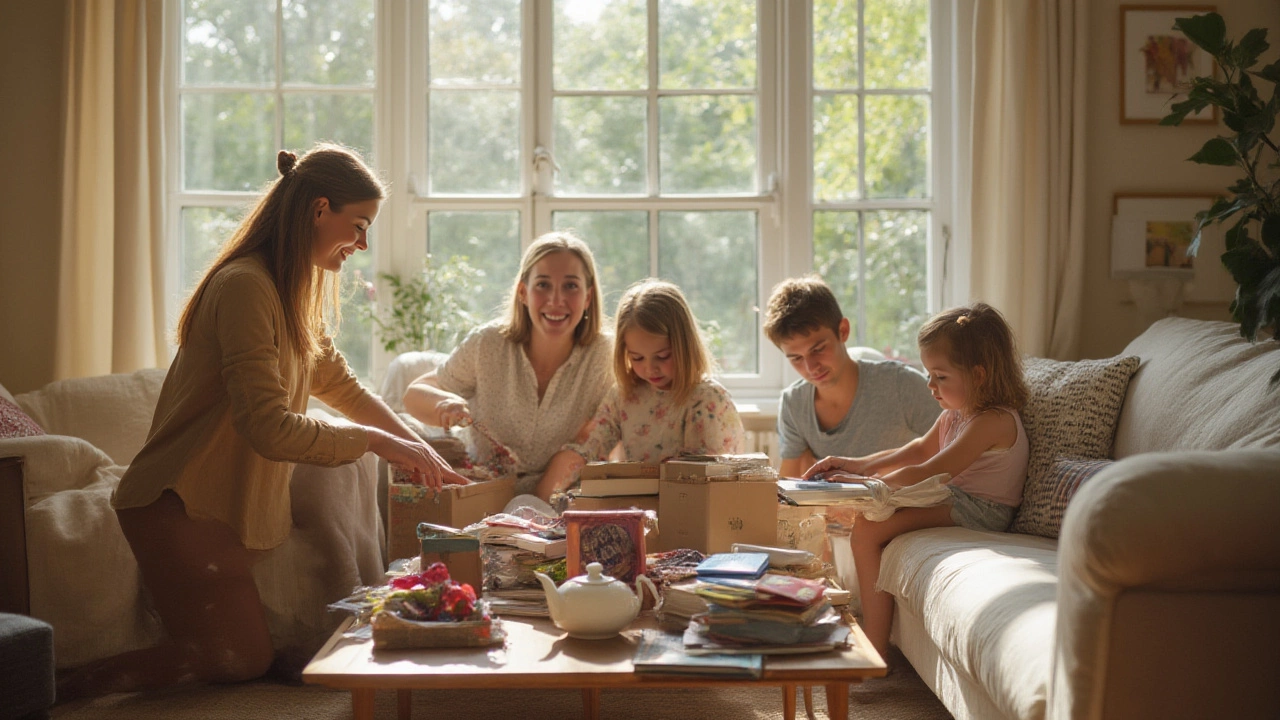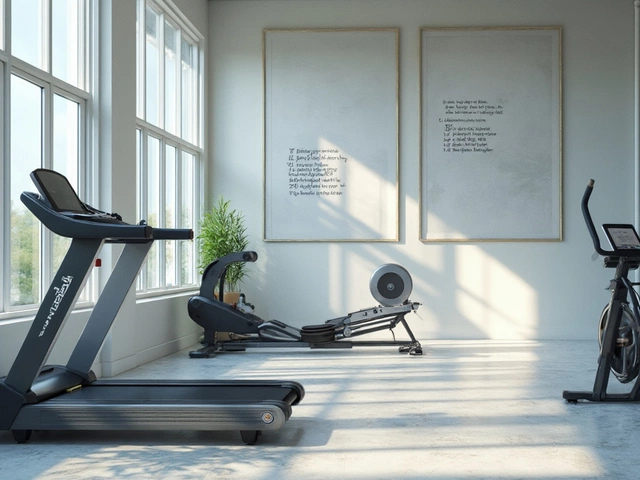If you’ve ever looked around your home and thought, “How did this mess even happen?”, you’re not alone. Most of us have had days where the laundry piles up, tables vanish beneath paper mountains, and finding your favorite mug means doing archaeological digs in the kitchen. Fact is, a cluttered home is more common than you might think—especially in fast-paced cities like Sydney, where space is precious and life doesn’t slow down. Research from the University of New South Wales found that nearly 65% of urban Australians say clutter causes them stress, and 40% confess they have skipped inviting friends over because of the mess. Turns out, chaos isn’t just annoying—it actually weighs on your mind. But don’t worry, you can reclaim every room without spending weeks or a small fortune. It’s not about being perfect. It’s about finding what works in your real, often hectic life. So, let’s roll up those sleeves and get practical.
Why Does Clutter Happen? Triggers and Real Solutions
Clutter sneaks up on us in sneaky ways—like that box of cords you might need “someday” or kids’ art projects too cute to toss. Sydney’s population jumped by 8% in the last five years (Australian Bureau of Statistics, 2024), with many homes shrinking in size. It means we have less room but keep accumulating. A lot happens unconsciously: mail lands on tables, shoes gather by doors, and before you know it, everyday life fills up every surface.
So, what really causes mess? Experts—like Professor Catherine Phillips, who studies human behavior and environment—suggest it’s a combination of habit, emotion, and lack of storage. Sometimes it’s hard to let go for sentimental reasons. Or we might be too tired after work to tidy up, so stuff just piles on.
One simple trick? Identify your trouble zones. Sometimes it’s the entryway, or maybe the kitchen counter that attracts everything from invoices to car keys. Writing down the top three messy hotspots in your house helps you focus. Instead of trying to overhaul your whole place in one marathon, start with those.
And here’s a funny thing: studies show we actually become “blind” to clutter we see every day. So, ask a friend to point out problem spots or take a few candid room photos—you’ll notice messes you’d forgotten about.
It’s also key to understand your emotional attachment to things. Maybe you saved all your uni notes “just in case,” or you keep broken gadgets out of guilt. Give yourself permission to let go, especially of items that no longer serve a purpose. A 2023 study found most people only regret getting rid of one out of every 50 things they donated or tossed.
And if it all feels overwhelming? Break it down. Promise yourself ten minutes of tidying in one area—often, that gets the ball rolling and it’s easier to keep going once you start seeing little wins. Remember, clutter doesn’t appear in one day, so it won’t disappear in one either.
Step-by-Step Decluttering: Make It Actionable
There’s no magic wand, but there’s a method to the madness. Follow a structure, and you’ll avoid decision fatigue (that tired feeling when you have to make too many choices at once). Here’s a practical plan to really tackle the mess, room by room.
- Declutter by Category, Not by Room
Instead of moving from one side of the house to the other, grab items by type—like books, clothes, or kitchen gadgets. Marie Kondo’s famous method focuses here, and it works because you see exactly how much you own. - Bring Sorting Supplies
Grab boxes or bags marked as: Keep, Donate, Sell, Recycle, and Trash. Place everything into one—no maybes, or you’ll be stuck forever. If you’re on the fence, put it in a “Maybe” box and revisit it after a week. - Set a Timer
Fifteen minutes is often enough to make visible progress and stay focused. If you’re motivated, keep going another fifteen. - Start Small
Pick an easy win: a sock drawer, your kitchen’s “junk” basket, or a bedside table. Once you see that space cleared, you’ll feel fired up to keep going. - Remove Decluttered Items Immediately
Get that donate bag out of the house as soon as you fill it. Otherwise it just moves from one corner to another and adds visual guilt. - Ask the Hard Questions
Have you used this in the last year? If it disappeared, would you even notice? Items you forgot about probably aren’t needed. Lean into honesty here. - Clean As You Go
Every time you empty a spot, swipe it clean before putting anything back. - Get the Family Involved
Kids can help choose which toys to donate. Partners can tackle closets or garages together. You’re not on your own! - Use the Four-Box Method
Visually seeing your progress is motivational. If it feels too hard to decide on each item, just sort everything first, and do the keep/toss decision at the end. - Be Kind to Yourself
Decluttering is hard, especially if you grew up with a “just in case” mentality or sentimental family keepsakes. Remember: letting go is about making room for what matters now.
A quick look at clutter by category in Australia:
| Category | Average No. of Items Owned | Regularly Used (%) |
|---|---|---|
| Clothes | 148 | 38 |
| Kitchen Gadgets | 43 | 31 |
| Books | 98 | 17 |
| Toys | 72 | 28 |
Just imagine how much space you’ll free up by getting rid of things you rarely use. It’s eye-opening. Every item you let go saves the cleaning, dusting, and mental energy required to keep it around. You can actually “see” less stress in your space once you’ve finished a big declutter.

Make It Stick: Smart Storage & Daily Habits
After a big clean-out, clutter can creep back in unless you set up easy systems. No one wants to spend hours organizing, so focus on strategies that make putting things away as simple as leaving them out.
Use clear containers in the pantry or under the bed, so you actually see what’s inside. If you’re folding clothes, try drawer dividers—you’d be amazed how much neater socks and tees stay. Sydney’s quirky weather means coat hooks by the door save time and stop jackets from piling on chairs.
Daily reset routines matter: just five minutes before bed, clear the kitchen bench or tidy shoes. In families, assign everyone a “drop zone”—like a basket for each person near the front door—so stuff doesn’t land everywhere.
Don’t let paper take over counters. Sort mail as soon as it arrives—recycle junk, and put bills into a labeled folder to tackle once a week. If you’re drowning in kids’ schoolwork, keep only the best drawings in a display folder or snap digital photos.
Another tip? Sticky notes on problem spots. If your dining table turns into a storage depot, stick a reminder: “Is this where it belongs?” It sounds silly, but a University of Melbourne study found that visible cues boost the chances of keeping spaces tidy by 45%.
Embrace vertical storage. Use hooks, shelves, and wall pockets for keys, bags, or gadgets. And don’t forget that “out of sight, out of mind” cuts both ways—if you never use something because it’s hidden, maybe it doesn’t belong at all.
There’s no shame in a little tech help, too. Set calendar reminders for monthly sweeps of high-clutter areas, or use an app to log donations for tax time (the ATO lets you claim a deduction for some charitable giving, which feels even better when your closet has breathing room).
Last but not least, try the “one in, one out” rule. If you buy a new blender, donate the old one. New boots? Out with an old pair. It keeps things effortless and prevents new clutter from sneaking in. Even if you slip up, don’t stress—what matters is that you’re aware and choosing to reset when things begin to pile up again.
Realistic Decluttering: When Life Gets in the Way
Decluttering sounds great, but let’s face it—sometimes life throws curveballs. Maybe you’re busy at work, caring for family, or just plain exhausted. There’s no need to feel guilty. Progress, no matter how slow, still counts.
Break big tasks into tiny, non-scary steps. If the thought of organizing a whole room feels impossible, just focus on one shelf or drawer. A 2024 survey in Sydney households found that people who decluttered “little by little” were twice as likely to stay clutter-free six months later compared to those who tried “all at once” blitzes.
Use the time you have—waiting for dinner to cook, five minutes before you leave for work, or while chatting on the phone. Keep a “donate” bag handy, and drop things in as you spot them. You don’t need an entire weekend. It’s about changing habits, not chasing perfection.
If motivation is low, team up with a friend for virtual “clean and chat” sessions, or use a before-and-after photo for instant encouragement. Online communities and decluttering challenges on social media can add a layer of fun and accountability. Every time you let go of something unnecessary, you’re making your home a bit more of a peaceful retreat.
It’s very normal to feel stuck now and then, especially if clutter is connected to tough memories or emotional times. If you’re truly struggling, consider hiring a local organizer for just an hour or two—they can help you see things differently and jumpstart the process.
So, the next time you find shoes multiplying at the door or paperwork swallowing your coffee table, know you’re not failing—you’re just living a regular, busy life. Perhaps the best reward of decluttering isn’t just a tidy house, but that calm, satisfying feeling when you can finally relax and just enjoy your space. That’s worth every donated jumper and every spare drawer freed up. Remember: little steps, real progress, and a whole lot less stress at home.






